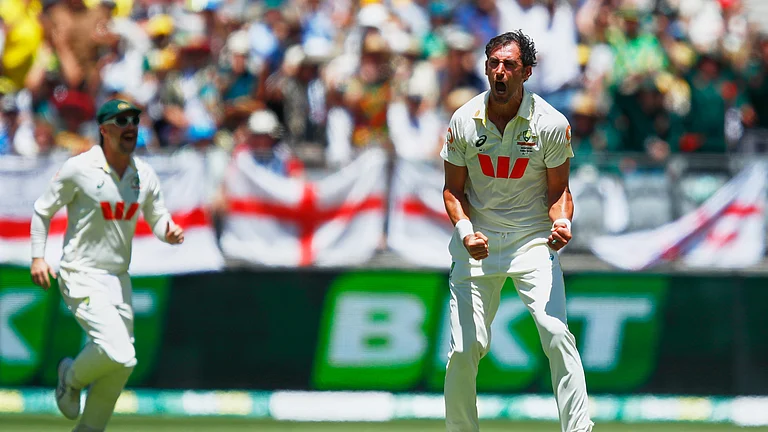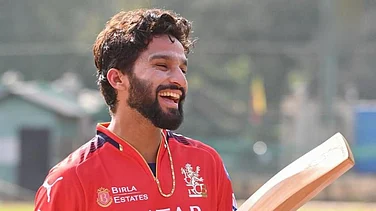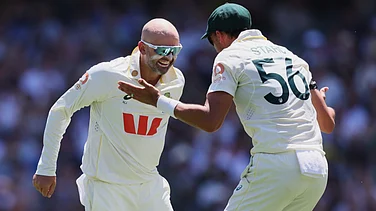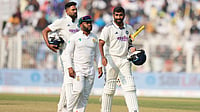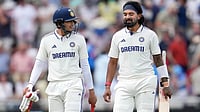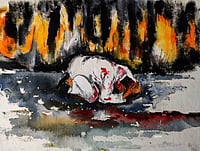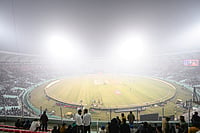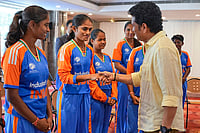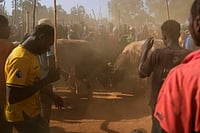With the passing of ‘Deadly’ Derek Underwood, an entire era comes to end. Of a time when cricket was played on uncovered pitches, left at the mercy of the weather, and occasionally, of vandals who dug up Test match pitches as in an Ashes Test in England in 1975, to express their displeasure at some political development. For good measure they poured oil into their handiwork that day, to make sure that play did not start again and the match had to be abandoned. (More Cricket News)
An era when a thunderstorm hit the Oval and flooded the ground in another Ashes Test match, in the 1968 series,with Australia tottering at 85 for 5 in the fourth innings. And spectators desperately hoping for an England victory pitched in to help dry the ground. When play resumed with just 75 minutes left, all eyes were on ‘Deadly Derek,’ their one hope of securing a famous victory within that short time.
And Underwood, all of 23 years then, did not disappoint, picking up the last four Australian wickets in the last half an hour with just 27 deliveries to end up with figures of 7 for 50. He won that match for England with just six minutes to spare, and helped to square the series.
His Kent best mate and partner-in-crime Alan Knott behind the stumps, had a hand in many of his dismissals for Kent and England, with the scorebook reading ‘caught Knott bowled Underwood’, or ‘stumped Knott bowled Underwood’ umpteen times for posterity, over the more than two decades that they played together for those two teams with such distinction.
Both remained loyal to their county club, Kent, for their entire careers that ran parallel to each other.
Their combination dismissals were much like the ‘ct Marsh b Lillee’ or ‘ct Solkar b Chandrasekhar’ combination dismissals of the same era, when great bowlers famously operated with an equally talented buddy in the close catching cordon to often complete the job for them.
There were no helmets in his days until the first ones appeared during the Kerry Packer era, and in a tribute to his immense powers of concentration and courage, Alan Knott stood up to Underwood’s medium-paced spin on difficult pitches often exposed to the vagaries of the weather, without a helmet or visor to protect him from an edged delivery, or a flying bail, such as the one that would end the career of South Africa’s Mark Boucher in later years.
Such was their near telepathic connection that often a quick look exchanged between the two of them was enough to formulate and execute a plan of a wide tossed-up one, or a quicker ball down the leg side, surprising the batter into a false shot, leading to yet another caught behind or a lightning quick stumping.
At his pace, Underwood could hit batters on the head with his disconcerting bounce and turn on ‘sticky’ pitches that were ‘stopping and gripping’, thus more than living upto his nickname of ‘Deadly’.

And if the BBC Test Match Special, radio commentators of our growing up years were to be believed, ‘Deadly’ liked to carry around a wet wicket rolled up in his kit bag!
On pre-1981 uncovered rain-affected pitches, his pace meant that the ball would skid on to batters in a flash, while simultaneously also extracting sharp turn on surfaces beginning to dry out in sunshine. He was almost unplayable on such wickets.
An unorthodox left-armer, he operated from a very long run up for a spinner and bowled much quicker than most spinners of his time. He deceived the best of batters with variations of pace and length, rather than variations in flight and guile, as was the norm for spinners.
Often bowling round the wicket and going wide of the crease, he fired his deliveries in with a full-body pivot. His metronomic accuracy and ability to bowl maiden after maiden wore down batters, forcing them to make a mistake as they tried to break the shackles.
Ian Chappell rated him as one of the most difficult bowlers he had ever played against and even Sunny Gavaskar, whom he dismissed many times, would probably second that.
Validation from two of the greatest Test cricketers of his time. Undoubtedly there would be more.
It would be wrong, however, to say that Underwood was effective only on rain-affected pitches. Many of his 297 Test match wickets came on very flat batting surfaces, including three crucial wickets in the Indian second innings of the 1977 second Test at Calcutta, against some of the best players of spin, setting up an England victory. His 54 Test wickets in India remained the highest by any visiting bowler till Nathan Lyon overtook it in recent years.
When uncovered pitches finally became a thing of the past in 1981, his effectiveness did not reduce in any way. His ability to turn the ball on all kinds of surfaces, coupled with his monotonous accuracy ensured that he kept picking up hundred wickets or more per English county season with an almost predictable regularity, finishing his 24-year first-class career with a mind boggling 2,465 wickets, at a mere 20 runs apiece.
Without a ball in hand, former England wicketkeeper Paul Downton remembers him as “a totally honest old-fashioned pro, one of the politest, among the most generous men you could meet. Always gave people time, loved talking cricket, incredibly humble, a really good man.”
His stats – which include 153 five-wicket hauls in first-class cricket – tell only part of the story, of a remarkable career marked by an uncanny ability to exploit the slightest hint of assistance from the wicket.
“He hated it when a batter pinched a single because a fielder was nodding off,” remembers Geoffrey Boycott. “He would glare at you. Derek had such a strong mind, he could bowl to win matches or tie up an end.”
Probably a little irked by the constant reference to wet wickets and uncovered pitches, Underwood once told ESPNcricinfo in an interview: “This thing about uncovered pitches was a fallacy in lots of ways. We might get one or two during the course of a season, maximum. There were wet summers, but you couldn’t get on the bloody pitch at all then!”
He finally retired from cricket in 1987, at the age of 42.
Awarded an MBE for his services to cricket in 1981, Underwood went on to serve as the president of Kent in 2006 and of the Marylebone Cricket Club (MCC) in 2009. He was inducted into ICC’s Hall of Fame the same year, before gradually withdrawing from public life, after being diagnosed with dementia.
He leaves behind his wife, Dawn, and two daughters.
Rest in Peace, Legend!
The views and opinions expressed are those of the author. The author is a veteran Wing Commander of the Indian Air Force, who has played Ranji Trophy for Services.











